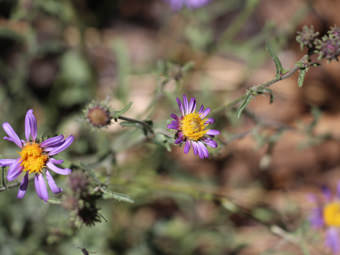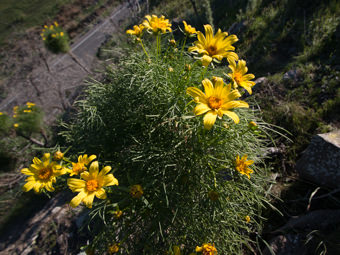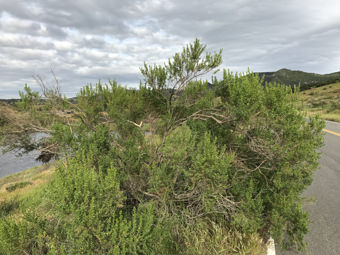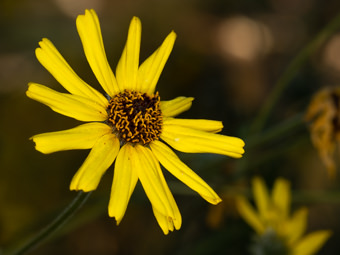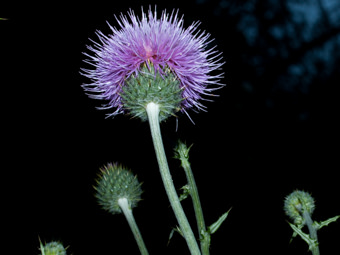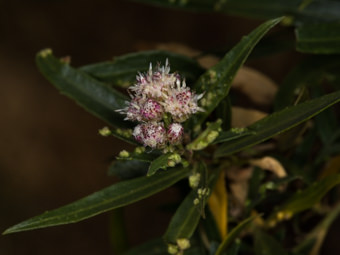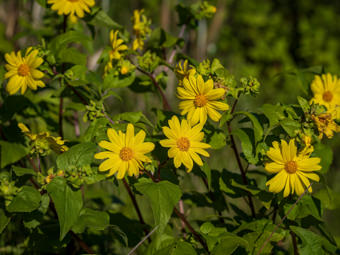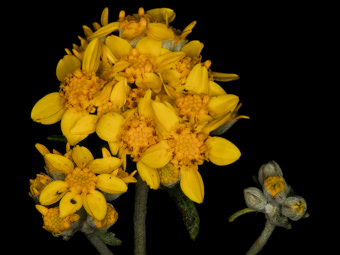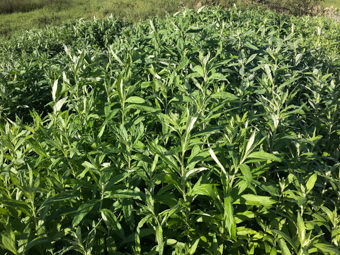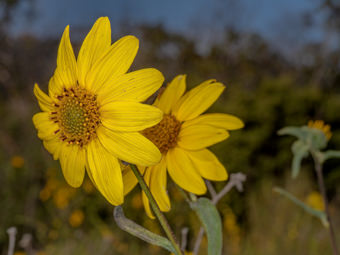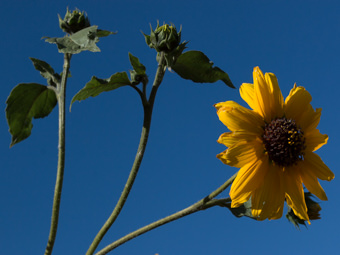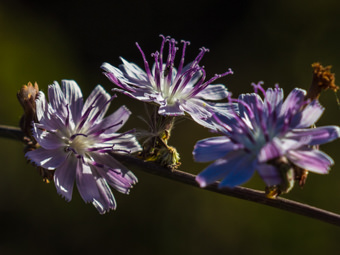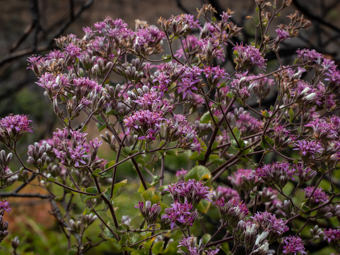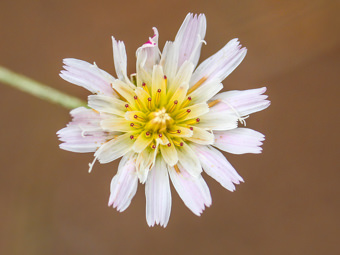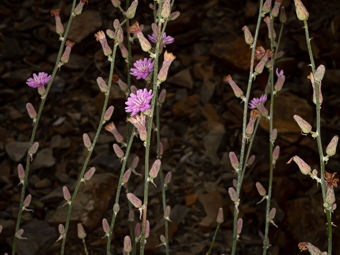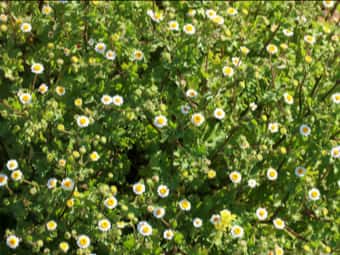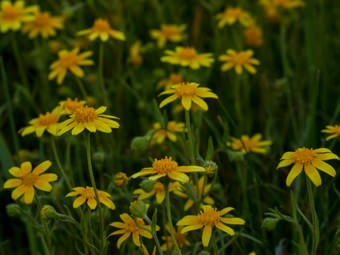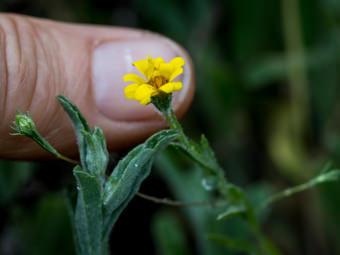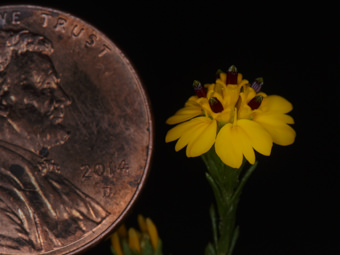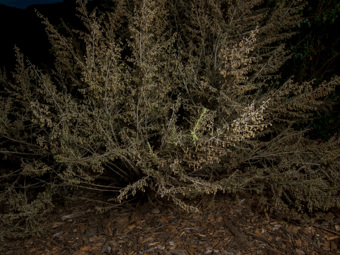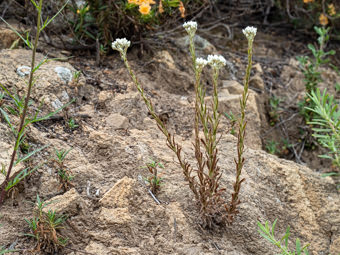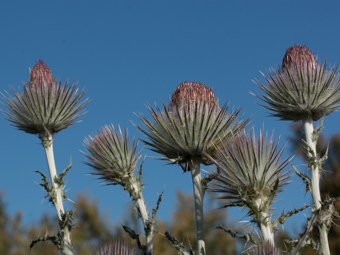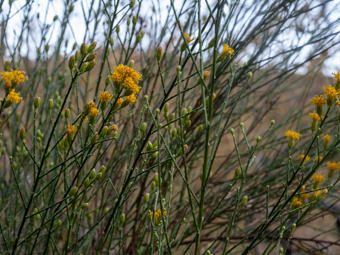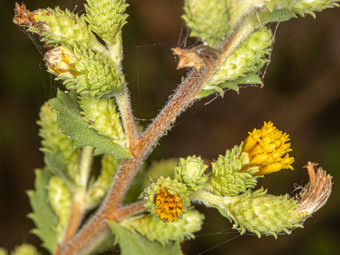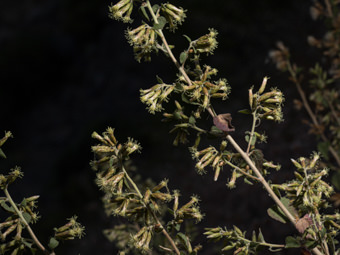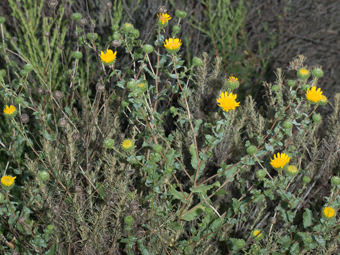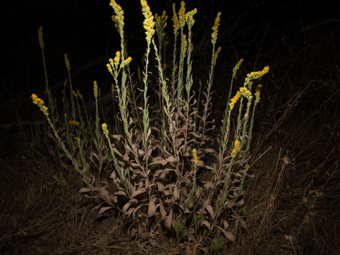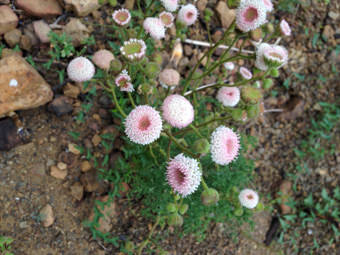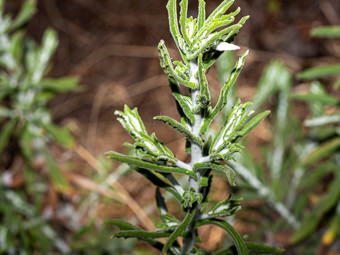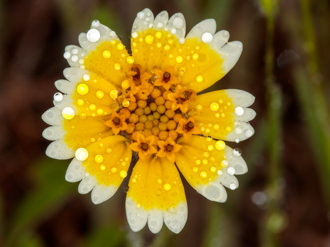
| Common Name(s): | Annual Coreopsis |
| Scientific Name: | Leptosyne bigelovii |
| Family: | Asteraceae (Sunflower) |
| Plant Type: | Annual |
| Size: | up to 12 inches |
| Habitat: | Oak Woodland |
| Blooms: | February to June |
| Fire Response: | Germinate from Seed |
Annual Coreopsis, Tickseed (Leptosyne californica) is an annual herb that is primarily found in California. This plant is categorized as an Asteraceae (Sunflower in laymen terms). California Coreopsis grows at elevations of 30 to 600 meters (100 to 2,000 ft). The plant inhabits the following communities: Southern Oak Woodland, Valley Grassland, Joshua Tree Woodland, Creosote Bush Scrub. I have found this somewhat uncommon plant on the Ray Miller Trail and along the Triunfo Creek Trail.
The flowers of the Coreopsis plant are typical of many other Sunflower/Asteraceae species - comprising disk and ray flowers, but the dark green leaves sets them apart; short, narrow and considered basal. Leaves can be divided into several lobes. There will be numerous leafless reddish stems, each topped by a single flower approximately one inch in diameter. Surrounding the disk flowers is a circle of yellow pigment that is subtle and oh so perfect. This daisy like flower is a composite type flower that comprises five to twelve ray florets (they appear to look like petals but are are in fact parts of a complete flower) and twenty to sixty disc florets. Each floret or disk flower is also a complete flower. Often you can see the disk flowers in different stages of maturity. Seeds are produced by the disk flowers. The Ray flowers are broad and notched at the tip, have a few lengthwise grooves and are generally sterile. Below the flower are two rows of flower parts known as Bracts (phyllaries); the upper (numbering eight) are pointed and yellow in color, while the lower (also numbering eight but joined at the base) are green. This makes it easier to identify this plant as a Coreopsis. Look at the images included with this page and you will see what I mean. Stems and leaves are smooth and hairless. The involucre of this plant reminds me of a Bell Pepper - what do you think?
Tickseed and Coreopsis refer to the seed of the flower. The relatively flat seeds are small, dry and look like bugs.
Leptosy'ne: from Greek leptos, "slender, thin, small, weak," and possibly syne, "together, joined"
bigelo'vii: after botanist and physician Jacob Bigelow (1787-1879), author of the first textbook on botany.
www.calflora.net is the source of this info.
